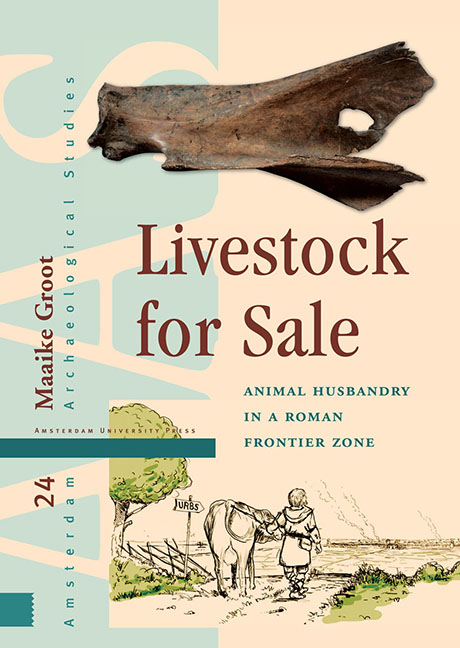Book contents
3 - Zooarchaeological Background
Published online by Cambridge University Press: 17 June 2021
Summary
This chapter will provide some background on the main zooarchaeological aspects that are investigated in this study: species proportions, age and sex, skeletal elements, butchery and measurements. This includes methodological considerations and previous research.
SPECIES PROPORTIONS
The proportions between the most commonly found animals indicate their relative importance in animal husbandry. In analysing changes in species proportions, there are several methodological problems. First of all, our data consist of remains of dead animals, whereas we are interested in the living herd as well as slaughtered animals. This is a more general methodological problem that also applies to age data. The exploitation of farm animals includes killing some of them, either for meat (slaughtering) or because they are not useful (culling). However, the exploitation of living animals for products such as milk, wool, labour (traction or riding) and manure is just as important. Animals exploited for such products may still be killed at the end of their useful life (i.e. when they no longer produce offspring, the quality of their wool decreases or they are no longer able to pull a plough). A second problem is inherent to using proportions. When the proportion of one species increases, it is not possible to establish whether this is because the actual number of individuals of this species increases, or whether their number remains stable, but numbers of the other species decrease. In this sense, we are dealing with relative changes, and references in the text should be understood in this way: when a species is said to increase, it increases in proportion to the other species. Of course, it could also be said that the other species all decrease in proportion. Finally, in material which has been collected by hand rather than by sieving – which is the case for most of the animal bones in this study –, the smaller mammals are likely to be underrepresented because of the smaller size of their bones.
AGE AND SEX
In order to reconstruct animal husbandry practices, it is not enough to know the relative importance of the different domestic species. Slaughter patterns reveal insight into the exploitation focus: animals raised for meat will generally be killed at a younger age than those used for wool, milk or traction.
- Type
- Chapter
- Information
- Livestock for SaleAnimal Husbandry in a Roman Frontier Zone, pp. 57 - 68Publisher: Amsterdam University PressPrint publication year: 2016



